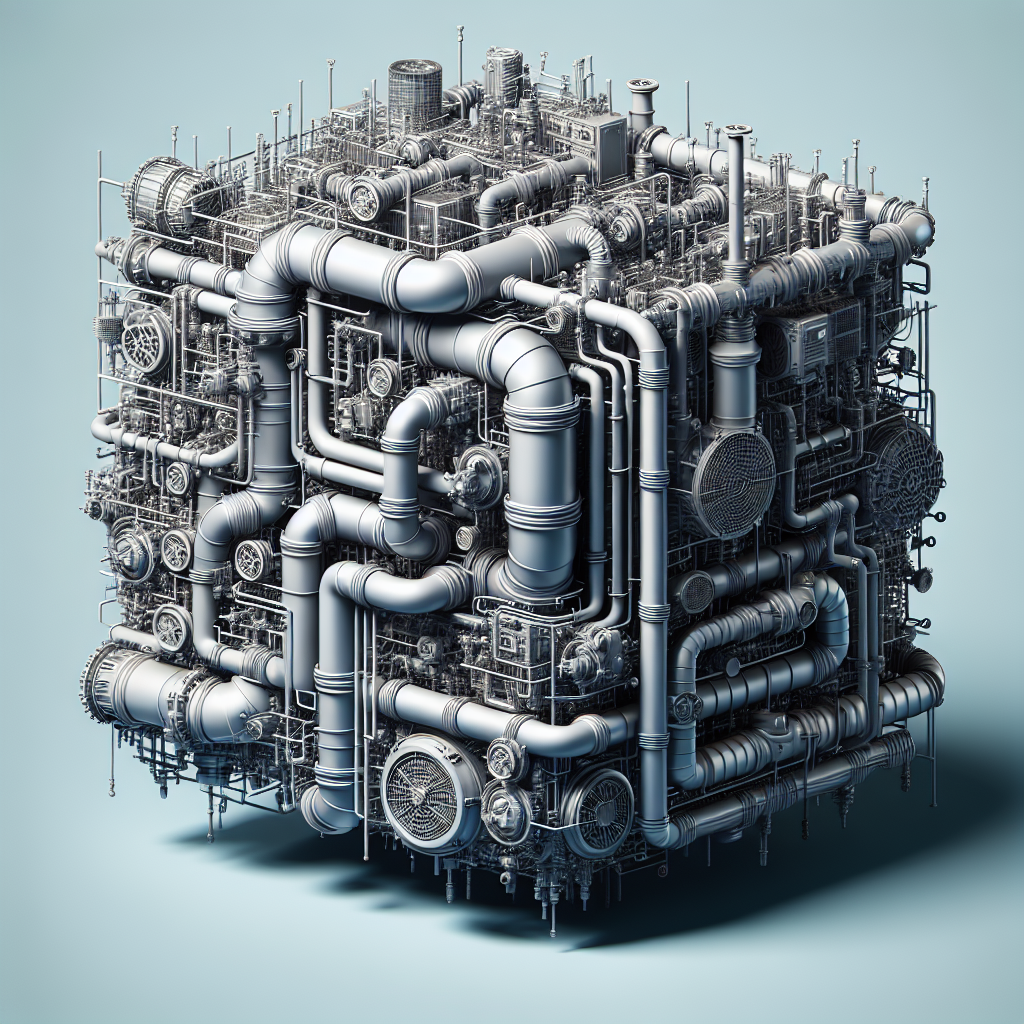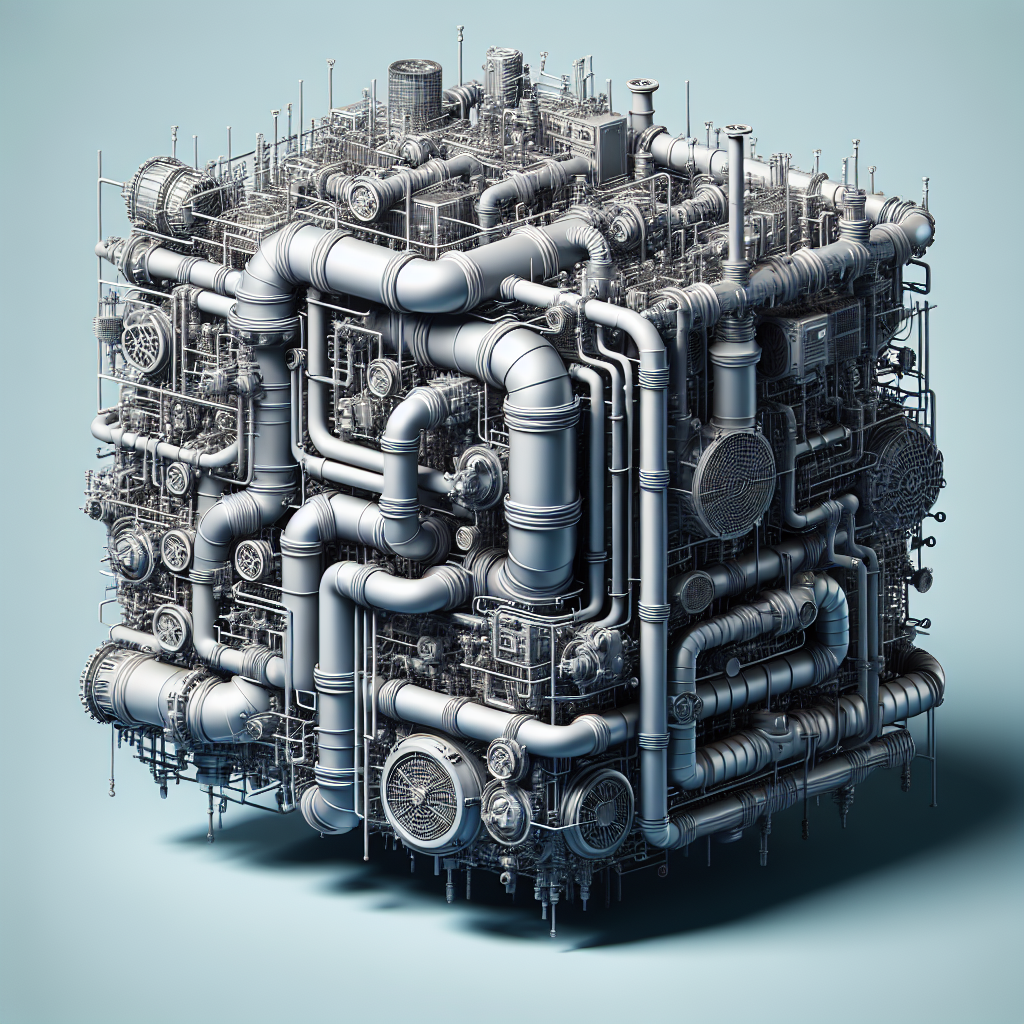Have you ever wondered what common issues could arise in combined plumbing and HVAC systems? Well, you’re in luck! In this article, we will explore some of the most frequent problems that homeowners may encounter when it comes to their plumbing and HVAC systems. From leaky pipes to malfunctioning air conditioning units, we will cover it all. So, if you’re interested in learning more about the potential pitfalls of combined plumbing and HVAC systems, keep reading!
1. Common Issues in Combined Plumbing and HVAC Systems
Combined plumbing and HVAC systems play a crucial role in maintaining a comfortable and functional environment in your home or commercial building. However, like any complex system, they are susceptible to various issues that can disrupt their efficiency and performance. In this article, we will explore the most common problems that can arise in combined plumbing and HVAC systems and discuss how to address them effectively.

1.1. Leaking Pipes and Ducts
One of the most common issues in combined plumbing and HVAC systems is leaking pipes and ducts. Leaks can occur due to wear and tear, aging pipes, poor installation, or even external factors like high water pressure or extreme temperatures. These leaks not only result in water wastage but can also cause damage to the structural integrity of your building.
To address leaking pipes and ducts, it is important to regularly inspect your system for any signs of leakage, such as damp spots on walls, ceiling stains, or unusual odors. If you notice any leakage, it is recommended to consult a professional plumber or HVAC technician who can accurately identify and repair the source of the leak. Promptly fixing leaks can prevent further damage and save you from expensive repairs in the long run.
1.2. Inadequate Water Temperature Control
Another common issue in combined plumbing and HVAC systems is inadequate water temperature control. Improperly calibrated thermostats or malfunctioning valves can lead to issues such as water that is too hot or too cold, making it difficult to achieve the desired comfort level in your home or building.
To address inadequate water temperature control, it is important to regularly check and calibrate thermostats and valves. If you notice significant fluctuations in water temperature or if it takes a long time for the water to reach the desired temperature, it is advisable to seek professional assistance. A qualified HVAC technician or plumber can identify the underlying problem and make the necessary adjustments or repairs to ensure optimal water temperature control.
1.3. Clogging and Blockages
Clogging and blockages are yet another common issue that can occur in combined plumbing and HVAC systems. Over time, debris, mineral deposits, and other substances can accumulate in pipes and ducts, obstructing the flow of water or air. This can lead to reduced efficiency, increased energy consumption, and even system breakdowns.
To prevent clogging and blockages, regular maintenance is essential. This includes periodic cleaning of pipes and ducts to remove any buildup of debris or sediment. Additionally, using filters and screens can help prevent larger particles from entering the system and causing blockages. If you encounter persistent clogging or blockages, it is recommended to consult a professional who can perform a thorough inspection and implement effective solutions.
1.4. Corrosion and Rust
Corrosion and rust are prevalent issues in combined plumbing and HVAC systems, particularly in pipes and fittings that come into contact with water. Corrosion can weaken the structural integrity of pipes, leading to leaks, reduced water flow, and potential water contamination. Rust, on the other hand, can affect the efficiency of heating and cooling components, resulting in increased energy consumption and system malfunctions.
To tackle corrosion and rust, it is important to use high-quality materials during installation and regularly inspect the system for any signs of deterioration. Implementing corrosion-resistant coatings or using corrosion-resistant materials can help prevent these issues. In cases where corrosion or rust has already occurred, it is advisable to seek professional assistance to replace the affected components and prevent further damage.
1.5. Improper Ventilation
Proper ventilation is essential for maintaining a healthy and comfortable indoor environment. In combined plumbing and HVAC systems, improper ventilation can lead to various issues, such as poor air quality, mold growth, and increased energy consumption. Insufficient ventilation can also impact the effectiveness of heating and cooling systems, resulting in reduced comfort levels.
To address improper ventilation, it is important to ensure that your system is properly designed and installed. Adequate ventilation points should be strategically placed throughout your building to allow for proper air circulation. Regular maintenance, including cleaning of air filters and ductwork, is also crucial to prevent the accumulation of dust and debris that can obstruct airflow. If you suspect inadequate ventilation, it is best to consult an HVAC professional who can assess your system and recommend appropriate solutions.
1.6. System Inefficiency
System inefficiency is a common issue that can affect both the plumbing and HVAC components of a combined system. Inefficient systems consume more energy, resulting in higher utility bills and a negative impact on the environment. This can be caused by various factors, including outdated equipment, improper system sizing, poorly maintained components, or incorrect installation.
To improve system efficiency, regular maintenance and inspections are crucial. This includes cleaning or replacing air filters, checking for air or water leaks, and ensuring proper insulation. Upgrading to energy-efficient equipment and technologies can also significantly enhance system efficiency and reduce operating costs in the long run. Consult with an HVAC technician or plumber who specializes in energy-efficient systems to explore potential upgrades and improvements for your combined plumbing and HVAC system.
1.7. Noise and Vibration
Excessive noise and vibration can not only disrupt the comfort of your indoor space, but they can also be indicators of underlying issues in your combined plumbing and HVAC system. Common causes of noise and vibration include loose connections, faulty or worn-out components, or improper installation.
To address noise and vibration issues, it is recommended to hire a professional technician who can identify the root cause of the problem and implement appropriate solutions. This may involve tightening loose connections, replacing faulty components, or adjusting the installation to reduce vibrations. It is important to address these issues promptly as they can worsen over time and potentially lead to more significant problems.
1.8. Freezing and Bursting
In colder climates, freezing and bursting of pipes are common issues in combined plumbing and HVAC systems. When water freezes inside pipes, it expands, putting immense pressure on the pipe walls. This can lead to cracks or bursting, resulting in water leakage and potential water damage to your property.
To prevent freezing and bursting, it is important to properly insulate exposed pipes and ensure that your system is adequately protected from cold temperatures. This may involve using pipe insulation or applying heating elements to vulnerable areas. It is also advisable to drain and shut off outdoor pipes and hoses before winter to minimize the risk of freezing. If you encounter freezing or bursting, it is crucial to contact a professional plumber who can safely repair or replace the affected pipes.
1.9. Backflow Problems
Backflow occurs when the flow of water in a plumbing system reverses, potentially allowing contaminated water to enter the clean water supply. This can happen due to backpressure or back-siphonage, and it poses a serious health risk to you and your household.
To prevent backflow problems, it is essential to install appropriate backflow prevention devices in your combined plumbing and HVAC system. These devices, such as backflow preventer valves, ensure that the flow of contaminated water is prevented or redirected, effectively protecting the quality of your water supply. Regular inspections and maintenance of these devices are also necessary to ensure their proper functioning. If you suspect backflow issues, consult a professional plumber who can assess your system and recommend suitable backflow prevention measures.
1.10. Lack of Maintenance
Perhaps the most common issue in combined plumbing and HVAC systems is the lack of proper maintenance. Neglecting regular inspections, cleaning, and servicing can lead to all of the problems mentioned above, as well as reduce the lifespan of your system and increase the risk of costly repairs.
To avoid the consequences of inadequate maintenance, it is essential to establish a regular maintenance schedule for your combined plumbing and HVAC system. This may involve tasks such as cleaning air filters, checking for leaks, inspecting pipes and ducts, and calibrating thermostats. Hiring a professional technician to perform an annual maintenance check-up can ensure that your system is in optimal condition and help identify any potential issues before they escalate.
In conclusion, combined plumbing and HVAC systems can encounter a wide range of issues, from leaking pipes and ducts to inadequate temperature control, clogs, corrosion, and more. By being vigilant, performing regular maintenance, and seeking professional help when needed, you can address these common problems effectively and ensure the optimal performance and longevity of your combined plumbing and HVAC system. Remember, a well-maintained system not only enhances the comfort of your home or building but also contributes to energy efficiency and cost savings in the long run.

